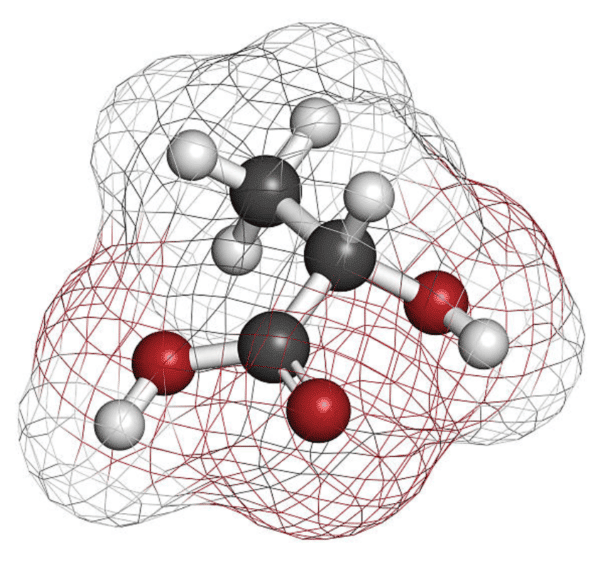Better understand how lactic acid works in the body
Lactic acid is much talked about in the world of sports. More bad than good. Most athletes fear it. Some see it as a waste product or a toxin that must be removed from the body. However, it is an element that plays an important role in the production of energy. Although its level is low, it is not negligible. Physical performance requires the use of lactic acid. To overcome the misconceptions about it, it is good to understand how it works in the body.
Contents
The real function of lactic acid for the body
Many athletes believe that their physical failure on the field is due to lactic acid in the body. A belief that coaches have been passing on to their athletes for some time. However, what you need to know is that it is an element that contributes to give energy to the body during a physical effort.
The body produces energy in three different ways. Two of them involve glycolysis to produce the strength needed during physical exertion. This is a process that converts Glycogen present in the body in energy.
For this, there are two distinct modes of process. There is the transformation in aerobic mode which uses oxygen. Then there is the anaerobic mode, which is done in the total absence of air. It is in this second period that lactic acid is produced.
But it only appears for a short time. A few moments after its appearance, it splits into two and forms lactate. It is the latter which, by accumulating, causes unpleasant sensations. Cramps and muscle burning effects are the most common cases.
How can you use lactate to your advantage?
Although the accumulation of lactate is bad for an athlete, it can be remedied. Indeed, just like glycogen, lactate can also be converted into a source of energy. This happens, some time after its appearance in the body.
To avoid unpleasant sensations, the body must be trained to transform it into energy. It must be recycled as soon as it appears in the body.
This way, fatigue is less noticeable. The body remains energetic even after a certain amount of physical effort. Training plays an important role in the body's ability to convert lactate into energy.
The muscles need lactate to be energetic. Then some of the lactate is redistributed to the vital organs of the body. Namely the kidneys, the heart and the liver.
Disability occurs when lactic acid is not recycled
Lactic acid is poorly recycled by the body when it is not used to receiving large amounts of it.
To have a flawless endurance during a competition, you have to train. The body will get used to a high lactate level. It will get used to recycling it. This automatically increases the energy produced by the body. The more lactate is recycled, the better it is for the athlete.
Lactate recycling is limited when the body is not used to having a considerable amount of lactate. It must therefore be accustomed to providing energy anaerobically to adapt to a high dose of lactate.
How to improve lactate recycling?
The lack of oxygen causes the body to produce too much lactate. For this reason, it is not advisable to lie down or sit down directly after a breathless run. This will only increase the negative effects caused by the overproduction of lactate in the body.
Even after a race is over, the lactate recycling process must take place. To do this, you have to keep walking while doing a breathing exercise. Breathe in deeply through the nose and out through the mouth. By repeating this exercise until the breathing is restored, the acidity or lactate will disappear from the body.
How to avoid the anaerobic threshold?
The anaerobic threshold is the maximum threshold that the body can withstand during physical effort. This threshold is reached when the body can no longer recycle the level of lactate or acid present in the body.
In order to avoid reaching the anaerobic threshold, the body must first be trained to be exposed to high physical effort. In this way, it is impossible to reach the threshold of its capacity to make efforts.
You have to start with small efforts, but over the long term. This is to get the body used to recycling the lactate produced in anaerobic mode. Then, you need to increase the fervor of the exercise. Then, stay in that stride for a while.
Finally, it is necessary to train to make a considerable effort during a rather long time. Over time, the body will get used to this mode of operation. It is therefore likely to reach the anaerobic threshold.
Do you want to build up your muscles properly?
Mid-distance to better manage lactate recycling
There is one activity that allows the human body to get used to recycling a high level of lactate. This is middle-distance running. This type of race requires a lot of speed over a fairly long distance (1500 meters and more, in some cases).
It is an excellent method to produce lactic acid in large quantities. But it is also the best way to work on the mind which is important in a competition. Indeed, it can considerably influence the will of an athlete to go to the end of his efforts. The mind can provide the necessary energy to maintain a constant rhythm during a physical effort.
Everything has been said, it is not the lactic acid that is bad for the body, but the lack of exercise in the face of an activity that requires a fairly high level of it. The next time pain and discomfort occur during a session that is too intense, do not blame it on lactic acid.
Far from being a waste product, lactic acid is a source of energy to be exploited to the maximum. The more it is worked, the more the body becomes resistant to physical effort.
Other articles to read :
How to successfully gain weight?
The different contractions in bodybuilding
Musculation every day to progress : Useful or not?








Technical articles always interesting and enriching bravo for your work